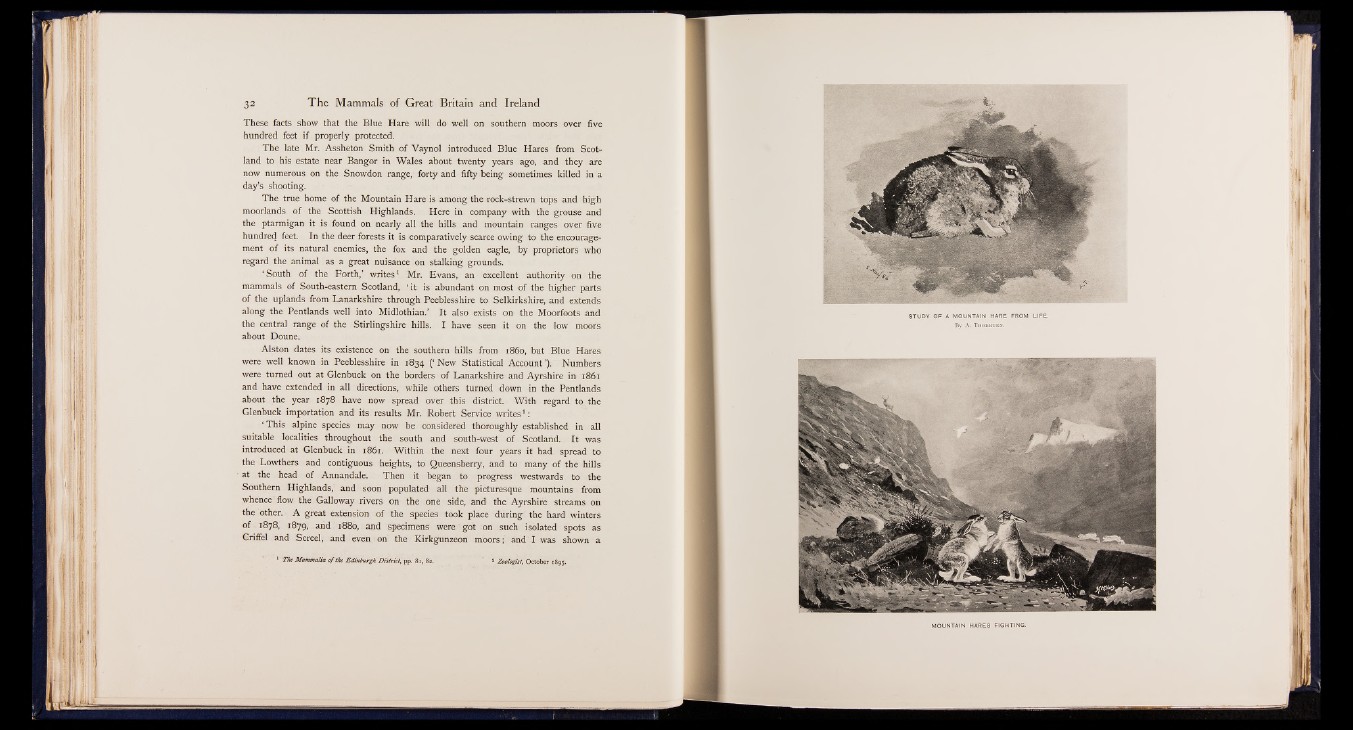
These facts show that the Blue Hare will do well on southern moors over five
hundred feet if properly protected.
The late Mr. Assheton Smith of Vaynol introduced Blue Hares from Scotland
to his estate near Bangor in Wales about twenty years ago, and they are
now numerous on the Snowdon range, forty and fifty being sometimes killed in a
day’s shooting.
The true home of the Mountain Hare is among the rock-strewn tops and high
moorlands of the Scottish Highlands. Here in company with the grouse and
the ptarmigan it is found on nearly all the hills and mountain ranges over five
hundred feet. In the deer forests it is comparatively scarce owing to the encouragement
of its natural enemies, the fox and the golden eagle, by proprietors who
regard the animal as a great nuisance on stalking grounds.
‘ South of the Forth,’ writes1 Mr. Evans, an excellent authority on the
mammals of South-eastern Scotland, ‘ it is abundant on most of the higher parts
of the uplands from Lanarkshire through Peeblesshire to Selkirkshire, and extends
along the Pentlands well into Midlothian.’ It also exists on the Moorfoots and
the central range of the Stirlingshire hills. I have seen it on the low moors
about Doune.
Alston dates its existence on the southern hills from i860, but Blue Hares
were well known in Peeblesshire in 1834 (‘ New Statistical Account’). Numbers
were turned out at Glenbuck on the borders of Lanarkshire and Ayrshire in 1861
and have extended in all directions, while others turned down in the Pentlands
about the year 1878 have now spread over this district. With regard to the
Glenbuck importation and its results Mr. Robert Service writes2:
‘ This alpine species may now be considered thoroughly established in all
suitable localities throughout the south and south-west of Scotland. It was
introduced at Glenbuck in 1861. Within the next four years it had spread to
the Lowthers and contiguous heights, to Queensberry, and to many of the hills
at the head of Annandale. Then it began to progress westwards to the
Southern Highlands, and soon populated all the picturesque mountains from
whence flow the Galloway rivers on the one side, and the Ayrshire streams on
the other. A great extension of the species took place during the hard winters
of 1878, 1879, and 1880, and specimens were got on such isolated spots as
Griffel and Screel, and even on the Kirkgunzeon moors; and I was shown a
The Mammalia o f the Edinburgh District, pp. 81, 82. s Zoologist, October 1895.
Ha
STUDY OF A MOUNTAIN HARE FROM LIFE.
By A. Thorburn.